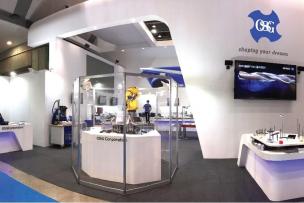Industry 4.0 is all about the final realization of the “smart factory.” Factories have the capability to monitor and facilitate changes on the fly based upon data from any number of inputs in the plant. Realizing this next level of manufacturing output should be the goal of every shop, as it represents the pinnacle of efficiency and productivity.
Attainment of Industry 4.0 will be no easy task. In fact, the path is far from clear, given how quickly the technology being developed to support it is still evolving daily. However, if a shop hopes to make strides in the direction of ultimate efficiency, one component is clear: the need for improved process reliability.
If data inputs gathered during a machining operation have an extreme number of variances, it becomes more difficult to create any type of decision logic the machine can follow to effect an improvement. For example, how do you tell a machine when to change a tool prior to failure when it lasts two parts one day and ten parts the next? How do you realize positive ROI on automation if stoppage is constantly required to rework parts that are out of tolerance? What about those that are scrapped entirely due to unplanned tool failures? So while automation, data gathering, data analysis and the internet of things are all important elements in Industry 4.0, attaining a higher degree of process reliability should be the first domino to fall.





Talk to Us!
Leave a reply
Your email address will not be published. Required fields are marked *